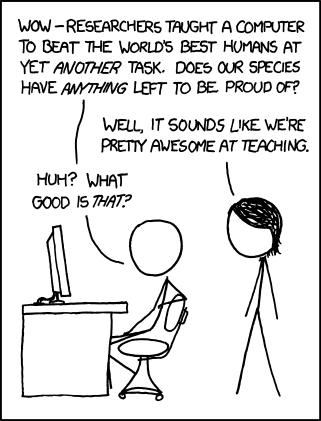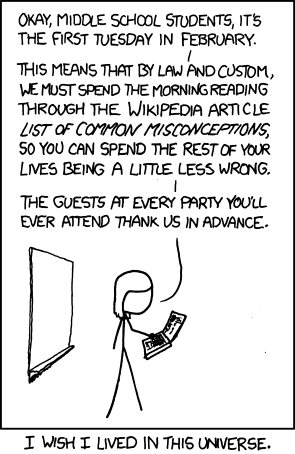Thought leadership risks becoming an empty marketing phrase just as it becomes essential to long term success. In an idea economy more and more firms understand the importance of getting credit for being on the leading edge, but getting credit is best preceded by actually being there. Organizations that depend on generating and exploiting ideas need to become more systematic about integrating thought leadership into their operating principles and practices not just their marketing.
Value of thought leadership
How many of today’s successful organizations are built on top of better ideas? Some, like FedEx or Southwest Airlines, were built on top of a powerful core idea. Others, like Amazon or Apple, were built on a powerful core plus ongoing extension and elaboration of that core with new ideas. Still others, like the best professional services firms, depend on a steady stream of new ideas.
If you’re fortunate enough to come up with a FedEx or Southwest quality idea, ongoing thought leadership isn’t much of an issue and you can focus your organizational energies on execution. On the other hand, if you’re in an organization or industry where the half-life of ideas is continuing to shrink, then you need a more explicit strategy than waiting for the next flash of entrepreneurial genius.
There have been many attempts to make thought leadership more manageable. These range from the full fledged research labs of large organizations (e.g., Xerox PARC, Microsoft Research, IBM Research, Bell Labs) to various research centers in professional services firms (e.g., Deloitte Center for the Edge, McKinsey Global Institute, Accenture Global Research).
Most of these examples separate research from practice and model themselves along academic lines. While they often produce excellent work and contribute to the overall market reputation of their parent organizations, they have been less successful at leveraging the experience of their parents or at feeding their insights back into their organizations. These examples also stamp thought leadership as a luxury available only to the largest and most successful organizations.
Where we went off track
While we can recognize the value of thought leadership as a component of innovation and of attracting new customers, we’ve had less success in transforming thought leadership into something systematic and manageable. While the end products of thought leadership are attractive, they shed limited light on what practices contribute to those end products.
Thought leadership presents a situation where working backwards isn’t helpful. Seeing the marketing and reputational value of a published article, senior executives will call their Chief Marketing Officers and order an article for the next issue of the Harvard Business Review. Wise CMOs, recognizing that this request has not come from someone named Gates, or Buffet, or Welch, will negotiate a more plausible timeline, identify some plausible topics, and search for potential authors within the organization.
With a great deal of luck and effort, this approach might yield an article in a year or so. Successful or not, marketing has now come to own the thought leadership problem. If the focus remains on the end products, which is likely, marketing will pursue opportunities to create materials that can easily be used as marketing and sales collateral. Perhaps they will enlist help from customer service or training groups to leverage their materials as input to the process as well.
This is a classic confusion of form over substance. At an extreme, we see such nonsense as Gartner Group trumpeting TLM (thought leadership marketing) as the next frontier for IT services marketing. Somewhat more sensibly, we see a variety of marketing and PR consultants pushing thought leadership as a key marketing strategy. Some good recent examples include:
Getting back on track
Whatever the marketing value of thought leadership, it is secondary to the operational value of increasing the effectiveness of how an organization learns from and disseminates practice. When you recast thought leadership as a core operating principle instead of ancillary marketing program, several implication follow. First, it changes what you recognize as relevant data. Second, it changes the kinds of support you provide to your front line practitioners. Finally, it shapes the practices you promote among your workforce.
Where you see data
A survey of current customers or prospects often passes for data in faux thought leadership attempts. Or, a few thin paragraphs passing as a case study. The insights that fuel real thought leadership flow from the interaction of rich data and penetrating questions. Those are typically found at the edges of current practice.
Organizations will find their richest data in the histories and traces of those projects that challenge their capabilities and are placed in the hands of their most adept staff. It’s often difficult to know in advance which projects will fall into this category. More often, it’s easier to predict that certain efforts will likely be routine.
How you support the field
The best time to collect this rich field data is as it’s being generated. The greater the delay between action and reflection, the more that real insight is displaced by revisionist history. Organizationally, you can provide systems and tools that make it simpler to capture and catalog working papers and work products as they are created. Second, organizations can set aside the time and create expectations that professionals will reflect on their work as they perform it.
What practices make a difference
Despite the fervent wishes of bureaucrats, the kind of reflection and learning from practice that fuel meaningful thought leadership won’t map into standard operating procedures or fixed processes. It is much more fruitful to think in terms of practices to encourage. At the team level, for example, After Action Reviews are a simple practice to amplify learning among the team.
Individual practices can range from debriefing a meeting over a beer to maintaining a journal of questions and reflections. The journal could be as simple as a Moleskine notebook or as extensive as a private blog.
Payoff to knowledge workers and their organizations
Treating thought leadership as a marketing responsibility does create organizational value, but at a significant cost in terms of effort and disruption within the organization. Marketing staff need the full support and participation of those line contributors generating the experience on which thought leadership must be based but if they drive thought leadership efforts from their immediate needs they risk alienating those on whom they most depend with requests for substantial incremental work.
On the other hand, treating thought leadership as an operating principle better aligns the demands on those core contributors. Now, rich, high quality input to thought leadership efforts are relevant components of ongoing work. Moreover, this approach enhances individual and organizational learning as a primary goal; thought leadership becomes a valuable side effect of doing work, instead of being an onerous additional requirement.
Professionals grow and develop through reflective practice. They build and test mini-theories of how their actions lead to outcomes. In a simpler world, that reflection was built on the slow accretion of experience. In today’s world, it is more effective to build on a foundation of explicit reflection.


![Reblog this post [with Zemanta]](http://img.zemanta.com/reblog_e.png?x-id=1e3326d6-3752-4847-9476-4ea309b2a201)
